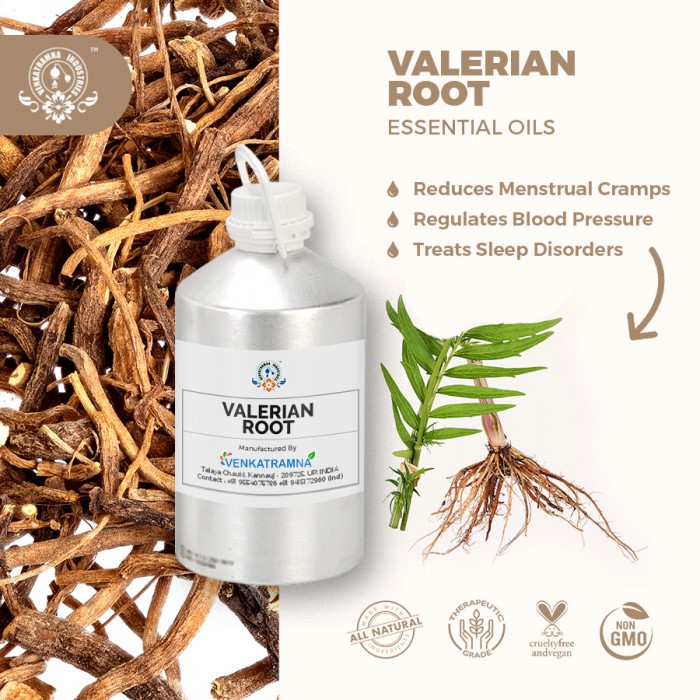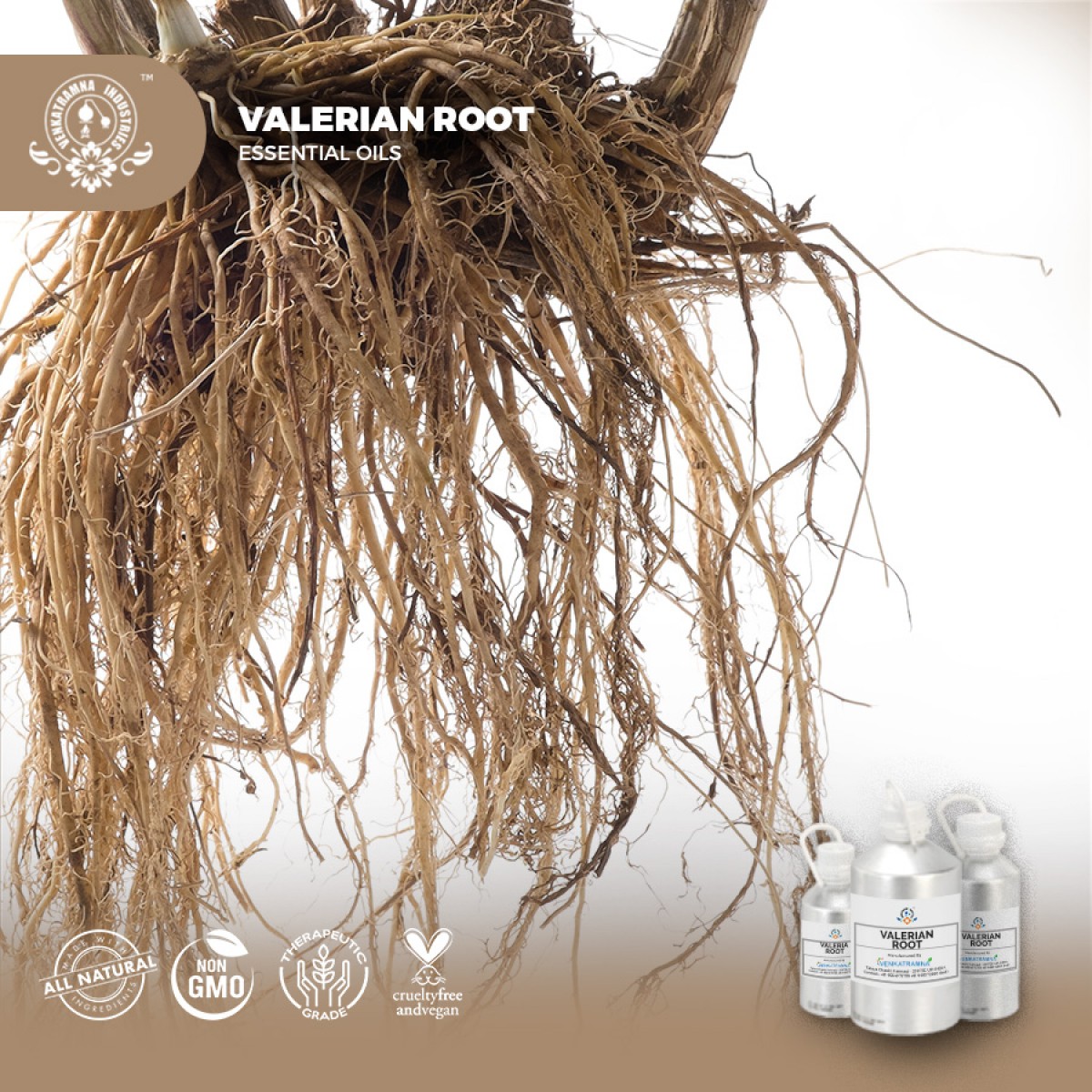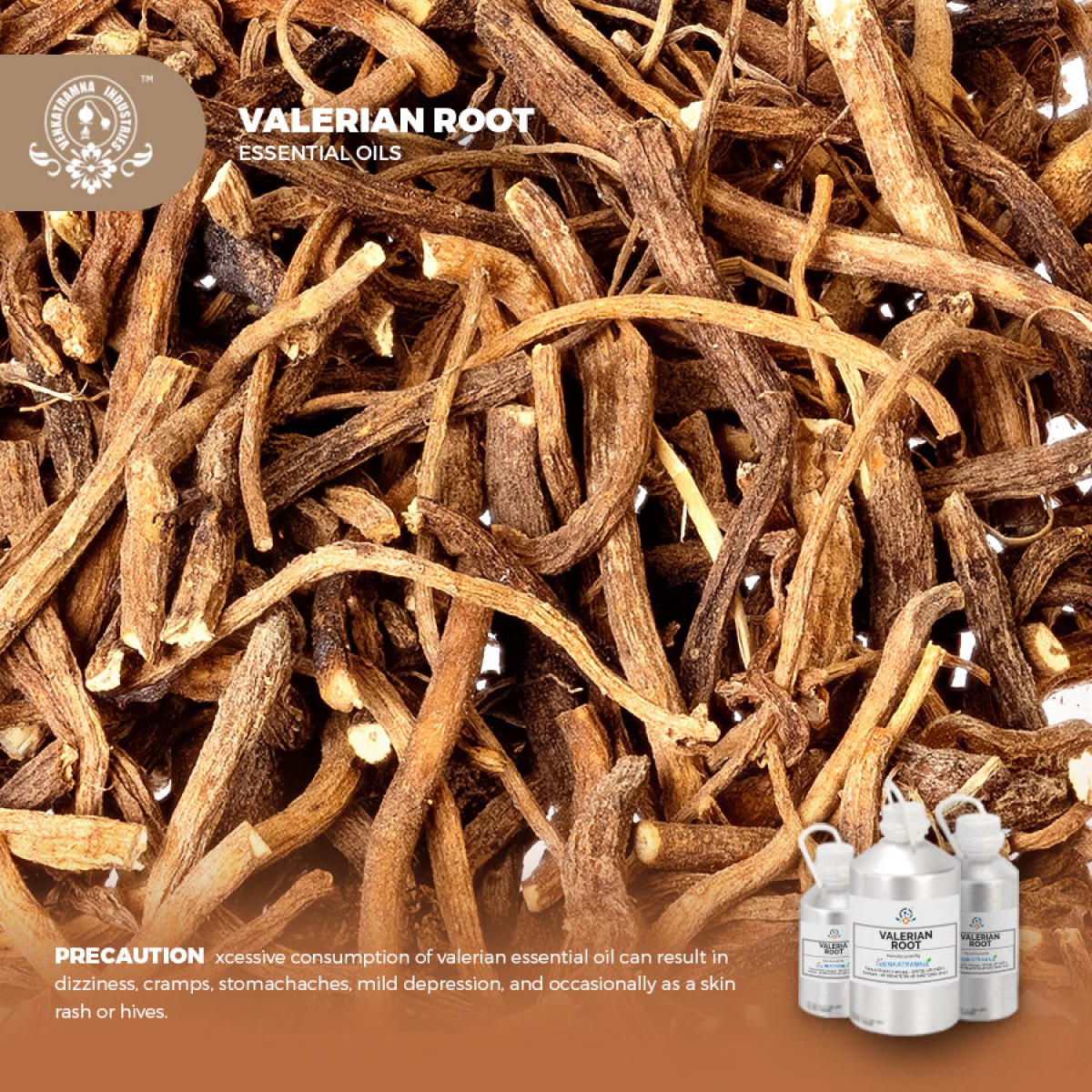Botanical Name: Valeriana wallichi Common name: Tagar-Ganthoda, Mushkbala, Sugand Read More
|
Botanical Name: |
Valeriana wallichi |
|
Common name: |
Tagar-Ganthoda,
Mushkbala, Sugandhabala, Tagara |
|
Plant
family: |
Balerianaceae |
|
Genus: |
Valeriana |
|
Appearance/Color: |
A viscous olive
or reddish to brown liquid. |
|
Odor: |
A base note with a
medium aroma, Valerian Root Essential Oil has a deep, earthy, slightly woody
scent. |
|
Blends With: |
Patchouli, Pine,
Lavender, Crdarwood, Mandarin, Petitgrain and Rosemary. |
|
Origin: |
India |
|
Source: |
Root |
|
Method
of Extraction: |
Steam
Distillation |
Valeriana wallichii also known as Tagara in Ayurveda is a hairy perennial herb belongs to Valerianeaceae family, growing in the temperate regions of the Himalayas and Khasia hills up to an altitude of 3,000m. The plant leaves are hairy herb grown up to 45 cm in height. Rootstalk is thick, long-petioled, cordate and ovate, horizontal and usually sinuate, 2.5-2.75 cm in diameter, cauline leaves only a few, much smaller, entire or pinnate, often crowded stipules nil. Flowers of Valerian are deciduous, white to pink, in terminal corymbs and unisexual, male and female in different plants. It has been used in Ayurveda as a medicine for various ailments and disorders from centuries. Roots of Tagara contain Valerinic acid, Valepotriates which has been used as sedative and tranquilizers. Essential oils were usually obtained from the root and dried rhizomes. The essential oil contains sesquiterpene, valeric acid, camphene, terpineol and terpene alcohol.
DISCLAIMER
The complete range of conditions
or methods of use are beyond our control therefore we do not assume any
responsibility and expressly disclaim any liability for any use of this
product. Information contained herein is believed to be true and accurate however,
all statements or suggestions are made without warranty, expressed or implied,
regarding accuracy of the information, the hazards connected with the use of
the material or the results to be obtained from the use thereof. Compliance
with all applicable federal, state, and local laws and local regulations
remains the responsibility of the user.
The FDA has not evaluated the
statements on this website. No claims are made by Venkatramna Industries as to
the medicinal value of any products from vriaroma.com or by us. The information
presented here is for educating our customers about the traditional uses of
essential oils and is not intended to diagnose, treat, cure, or prevent any
disease. You are responsible for understanding the safe application of these products.
If you have any questions, please call or email us for further information.
As per NAHA guidelines, New Directions Aromatics
(NDA) does not recommend the ingestion of essential oils. It is imperative to
consult a medical practitioner before using Essential Oils for therapeutic
purposes. Pregnant and nursing women and those taking prescription drugs are
especially advised not to use this product without the medical advice of a
physician. The oil should always be stored in an area that is inaccessible to
children, especially those under the age of 7.
The plant has been used as
traditional medicine in Ayurveda, Siddha, Homeopathy, ethnomedicine and Indian
System of Medicine (ISM), which is spread in the Himalayas. It is obtained from
the wild in the Netherlands, France Britain, Belgium, Eastern Europe, Germany
and Japan. It has been used in
Ayurveda as a medicine for various ailments and disorders from centuries.
It is anti-spasmodic,
stimulant, carminative and stomachic. It is useful in diseases of eye, blood
and livers. It is used as a remedy for hysteria, hypochondriasis, nervous
unrest and emotional stress. Also useful in clearing voice and acts as
stimulant in advance stage of fever and nervous disorder. The paste of roots
mashed in water is applied on forehead to alleviate the pain. Externally, the
paste of its roots is applied in wounds for better healing. Tagara (Valeriana
Wallichii) benefits include its use in neurological, psychological, and
digestive disorders. In low dosage, it calms the mind, strengthens nerves and
prevents convulsions. Therefore, it is used in the treatment of disturbed sleep
(insomnia), epilepsy, and paralysis. It has analgesic and anti-inflammatory
actions. So, it is used to treat osteoarthritis and rheumatoid arthritis. It
acts as an appetizer, carminative and antispasmodic. So, it helps to treat
abdominal pain, flatulence, gas, bloating, abdominal heaviness and loss of
appetite. It also improves the strength of the heart muscles and reduces blood
pressure. Therefore, it is also included in ayurvedic antihypertensive
medicines.
COMMON USAGE
·
Vata pacifier
·
Kapha pacifier
·
Analgesic
·
Anti-convulsant
·
Nootropic and cognitive enhancer
·
Soporific (Sleep inducing)
·
Digestive stimulant
·
Antispasmodic
·
Cholagogue (promotes the discharge of bile)
·
Hepatic stimulant
·
Cardiac stimulant
·
Anti-asthma
·
Diuretic
·
Aphrodisiac
·
Strengthening
·
Bitter Tonic
·
Febrifuge
·
Retinoprotective (good for eyes)
Ingredients:
|
S.No |
Key
Constituents |
Strength
(%) |
|
1 |
Patchouli alcohol |
40.2 |
|
2 |
d-guaiene |
10.7 |
|
3 |
seychellene |
8.2 |
|
4 |
Viridiflorol |
5.2 |
|
5 |
8-acetoxy-patchouli alcohol |
4.5 |
|
6 |
a-guaiene |
4.3 |
|
7 |
a-patchoulene |
4.3 |
|
8 |
b-pinene |
2.9 |
|
9 |
Methyl carvacrol |
2.5 |
|
10 |
Bornyl acetate |
1.9 |
|
11 |
Camphene |
1.8 |
|
12 |
a-muurolene |
1.7 |
|
13 |
b-caryophyllene |
1.6 |
|
14 |
a-pinene |
1.5 |
|
15 |
Methyl thymol |
1.3 |
|
16 |
Kessane |
1.2 |
|
17 |
g-patchoulene |
1.2 |
|
18 |
Ncene |
1.1 |
Safety Summary
·
Hazardous No Data
·
Contraindications Not Known
Systemic Effects
·
Acute toxicity: no data available
·
Respiratory and skin sensitization: no data
available
·
Carcinogenicity: no
data available
·
Germ cell mutagenicity: no data available
·
Reproductive toxicity: no data available
·
STOT single exposure: no data available
·
STOT repeated exposure: no data available
·
Phototoxicity: no data available
·
Aquatic Toxicity: toxic to aquatic life with long lasting
effects
·
Bioaccumulation: No data available
·
Mobility in soil: No data available
·
Persistence and degradability: No data
available
·
PBT and vPvB assessment: No data available
·
Other adverse effects: Do not allow it to
enter into water systems and marine environment.





 GCMS-213.pdf
GCMS-213.pdf




